Advertisement
Grab your lab coat. Let's get started
Welcome!
Welcome!
Create an account below to get 6 C&EN articles per month, receive newsletters and more - all free.
It seems this is your first time logging in online. Please enter the following information to continue.
As an ACS member you automatically get access to this site. All we need is few more details to create your reading experience.
Not you? Sign in with a different account.
Not you? Sign in with a different account.
ERROR 1
ERROR 1
ERROR 2
ERROR 2
ERROR 2
ERROR 2
ERROR 2
Password and Confirm password must match.
If you have an ACS member number, please enter it here so we can link this account to your membership. (optional)
ERROR 2
ACS values your privacy. By submitting your information, you are gaining access to C&EN and subscribing to our weekly newsletter. We use the information you provide to make your reading experience better, and we will never sell your data to third party members.
Start-ups
C&EN’s 2019 10 Start-Ups to Watch
These young firms are working to improve the lives of individuals and communities as well as the health of the planet
by Melody M. Bomgardner
November 11, 2019
| A version of this story appeared in
Volume 97, Issue 44

Credit: Shutterstock/C&EN
Even the hippest chemist doesn’t know how many potentially world-changing chemistry start-ups are out there. As we at C&EN present our fifth class of 10 Start-Ups to Watch, we can confirm that there are definitely hundreds, and perhaps thousands.
That makes the job of picking just 10 a challenge—though an inspiring one. This year’s choices were selected after vigorous debate by our writers and editors. We made our own lists based on our day-to-day reporting and scoured the hundreds of firms nominated by readers and advisers from around the world. We picked winners for their groundbreaking chemistry as well as the importance of the problems they are tackling.
Which of these companies, should they find further success, will improve your life or that of your family or community? Those of us who live in places with drinking water that contains per- and polyfluoroalkyl substances (PFAS) will want to read about CycloPure. This start-up is game to come to your town’s aid, treating your water with an approach akin to that of Febreze.
If online shopping has left you with piles of foam packaging material you want to dispose of responsibly, look to Polystyvert for an answer. This start-up has a system to dissolve, purify, and recycle those masses of polystyrene.
Chemists working in industry are tasked with doing more with less, such as producing materials or ingredients using less energy and water. Via Separations is here to help with new materials that enable efficient liquid separations.
We don’t know how many people will be helped with cutting-edge RNA-based therapies. But Ligandal is working on ways to deliver messenger RNA or even CRISPR into cells using peptide nanoparticles. And Skyhawk Therapeutics says drugs that tweak how RNA is spliced can change a recipe for a dysfunctional protein into code that makes a functional one.
You’ve heard that a climate-friendly diet is one that consists of much less meat than we eat in developed nations. Sustainable Bioproducts says we can turn to an unusual fungus to satisfy our cravings for steak or chicken.
And if you live on Earth, you’ll be heartened to learn about the progress Mosaic Materials is making with its CO2-capturing metal-organic framework (MOF) materials. The MOF-amine complexes may be the kind of enabling chemistry needed to remove carbon from industrial emissions or directly from the air.
We don’t have a crystal ball at C&EN, and we can’t guarantee that these creative solutions will change your life for the better, but we sure like their odds. If you know a groundbreaking chemistry start-up out to change the world, nominate it for our 2020 feature at cenm.ag/startupnom.

At a glance
Launched: 2016
Headquarters: Skokie, Illinois
Focus: Water purification
Technology: β-Cyclodextrin-based polymers
Founders: Frank Cassou and William Dichtel
Funding or notable partners: $3.5 million in series A funding, $2.5 million in Small Business Innovation Research grants from the National Science Foundation and the National Institute of Environmental Health Sciences, and $4 million in series B funding led by Qualcomm cofounder Irwin M. Jacobs
With dangerous micropollutants like pharmaceuticals, pesticides, and per- and polyfluoroalkyl substances (PFAS) turning up in tap water, the world’s seemingly unquenchable thirst for bottled water isn’t surprising. In 2017, worldwide consumption of bottled water topped 375 billion L, according to the Beverage Marketing Corporation, and it has no signs of abating.
But the folks at CycloPure think their micropollutant-snagging polymers can reverse that trend.
“We’re hoping that we can change behaviors so that people get back to drinking water out of the tap,” says Frank Cassou, CycloPure’s cofounder and CEO. “We want to create trust and access to something that is in the home and is very affordable.” Doing so, he says, will make drinking tap water more appealing and will eliminate mountains of plastic water-bottle waste.
CycloPure’s Dexsorb and Dexsorb+ technology is based on β-cyclodextrin, a cup-shaped molecule made of seven glucose sugars hooked together like children playing ring-around-the-rosy. The cup’s hydrophobic interior has a diameter of just 0.78 nm, an ideal size for catching small organic molecules. CycloPure’s scientists connect these cups to one another with aromatic molecules, creating a cross-linked polymer with a high surface area and lots of tiny pores. As water flows through the polymer, small organic molecules collect in the β-cyclodextrin cups.
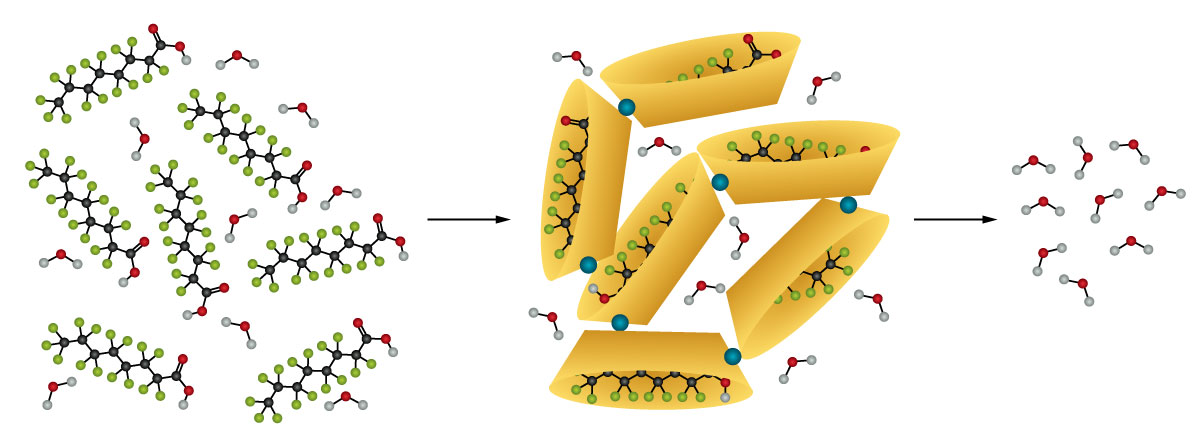
The polymers soak up more micropollutants than activated carbon, which is what’s commonly used in water filters, and they do it in a fraction of the time, the company says. By changing the aromatic linkers, the polymers can be tuned to adsorb specific types of compounds. What’s more, the polymers can be regenerated by washing them with methanol. Spent activated carbon has to be heated to 500–900 °C before it can be reused.
This isn’t the first time cyclodextrin molecules have been used to soak up organics. They’re what Febreze spray uses to eliminate odors.
William Dichtel, CycloPure’s cofounder and chief science officer and a chemistry professor at Northwestern University, says that although cyclodextrin-based polymers had been proposed for water purification, no one had found cross-linkers that worked as well as the ones his lab developed. “It was this gap that we kind of stumbled into and then realized all the potential that it had,” Dichtel says.
Dichtel and his research team discovered the technology behind CycloPure in 2015 when he was a professor at Cornell University. He had toyed with the idea of building a company around technology from his lab, but he didn’t think anything was advanced enough or addressed an important enough problem—until the cyclodextrin polymer discovery. “The societal problem is so great,” Dichtel says, “and the polymer itself is pretty simple to make,” coming together in a single step by reacting corn-derived β-cyclodextrin with commercially available cross-linkers.
“I’m a polymer chemist, so I’ll spend my career discovering new materials within the academic context,” Dichtel says. “But at some point the chemistry is over, and if you’re going to have an impact on the world, the way to do it is to get your technology out there.”
The first report of Dichtel’s adsorbent polymers went online in Nature just a few days before Christmas in 2015 (DOI: 10.1038/nature16185). On Groundhog Day of 2016, he and Cassou incorporated CycloPure. Since then, the company has raised $10 million in grants and series A and B funding.
While CycloPure’s long-term goal is to bring its technology to municipal water treatment facilities, in the near future it will be selling kits for testing for PFAS in the home. Other companies have expressed interest in using CycloPure’s technology to remove caffeine from coffee and bitter compounds from orange juice.
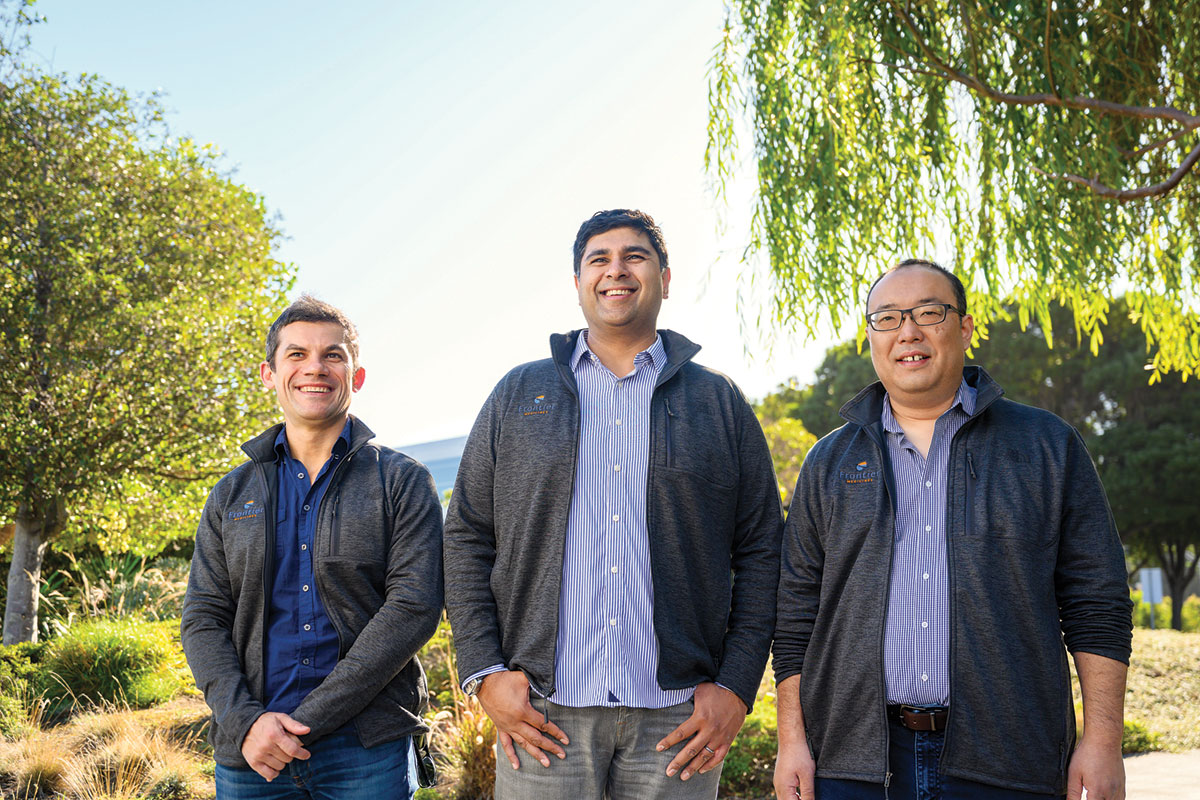
At a glance
Launched: 2018
Headquarters: South San Francisco
Focus: Cancer drug discovery
Technology: Chemoproteomics and artificial intelligence–enabled drug design
Founders: Daniel Nomura, Chris Varma, and Roberto Zoncu
Funding or notable partners: $67 million in series A funding, led by Deerfield Management, Droia Oncology Ventures, and MPM Capital
Like any good entrepreneur, Chris Varma was looking for the next big thing. In 2018, the life sciences venture capital veteran came upon the work of University of California, Berkeley, chemical biologist Daniel Nomura while scanning research papers. Nomura’s lab was making intriguing progress in drugging the undruggable.
Most small-molecule drugs work by binding to specific grooves on proteins, often the active site of an enzyme. But Varma says some 90% of the roughly 20,000 proteins in the human body simply don’t have a clear pocket—they’re too smooth or lack a fixed structure. This lack of a clear binding site is especially true for proteins involved in cancer.
“Undruggable” proteins do feature nooks that form as they move about a cell and encounter different partners. The issue for drug developers is that the pockets quickly disappear after a protein completes its biochemical work.
Varma read about Nomura’s success in using a technology called chemoproteomics to find and understand the function of the fleeting nooks (ACS Chem. Biol., 2018DOI: 10.1021/acschembio.8b00381). By mid-2018, Frontier Medicines was born. The biotech firm, founded by Nomura, his UC Berkeley colleague Roberto Zoncu, and Varma, who is also CEO, is combining machine learning and chemoproteomics to develop cancer treatments.
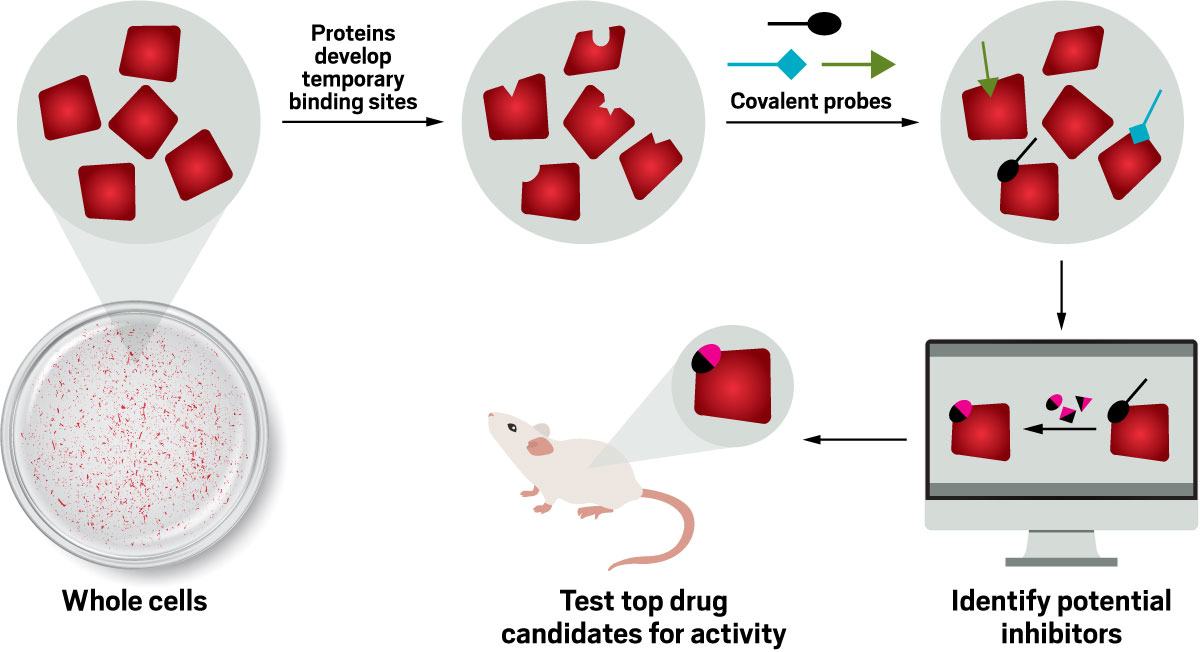
At the company’s core is the chemoproteomics platform, which lets scientists bombard proteins with covalent probes as they move about in cells. The probes dock at any spot where a protein might interact with a partner. Frontier’s research team has built a long list of these “hot spots” and is using a small-molecule library to understand if engaging a protein at a particular spot alters its function. Varma and Zoncu say they are using machine learning to improve the small-molecule libraries to better the chance of meaningful hits.
“We think we have a unique angle to go after these cancer drug targets,” Zoncu says.
Investors agree. In June, the biotech firm announced $67 million in series A funding. The team moved into more permanent space in South San Francisco, and Varma says it’s been on a hiring spree.
In theory, Varma says, Frontier’s technology can design covalent ligands that directly target about half the undruggable proteome. The company hopes to attack the other half using protein degraders—bifunctional small molecules that bind a protein of interest to a protein degradation chaperone called E3 ubiquitin ligase to tag it for collection and destruction in the cell’s proteasome.
The start-up is one of a handful of players using chemoproteomics to develop drugs against difficult targets. Vividion Therapeutics, founded by Nomura’s postdoctoral fellowship mentor, Benjamin Cravatt at Scripps Research in California, uses similar technology, and Novartis is working with Nomura and his colleagues at UC Berkeley to build its own chemoproteomics capacity.
But Varma and Zoncu argue that Frontier’s combination of hot spots, cancer biology, and protein degrader modulation will get it to the front of the pack. They are staring down a list of hundreds of proteins associated with cancer, Zoncu says, and building the knowledge to figure out which can be drugged, what small molecules can drug them, and how to get that molecule into a person with cancer.
Correction
This story was updated on Nov. 19, 2019, to correct the site of the protein degradation that the company is researching. It is the proteasome, not the lysosome. Also, the graphic has been updated to clarify that the experiments take place in cells, not cell lysates.

At a glance
Launched: 2017
Headquarters: Cambridge, Massachusetts
Focus: Materials discovery
Technology: Artificial intelligence and robotics
Founders: Alán Aspuru-Guzik, Jill S. Becker, Christoph Kreisbeck, Semion Saikin, and Dennis Sheberla
Funding or notable partners: $5.0 million in seed funding
Kebotix, a Cambridge, Massachusetts–based start-up with a novel idea for an autonomous materials discovery lab, came together in September 2017 at a conference on technology innovation to combat climate change.
Harvard University chemistry and chemical biology professor Alán Aspuru-Guzik and three partners from his lab were planning to attend the event, which was held in Mexico City and sponsored by Mission Innovation, an initiative backed by 24 countries and the European Union. They wanted to pitch the idea of melding artificial intelligence and robotics as a means of accelerating the discovery of materials.
At the last minute, the group invited Jill S. Becker, whom they had recently approached as a potential CEO for the company they envisioned, to join them.
Already moving fast, things sped up, Becker says: Aspuru-Guzik introduced her at the conference as CEO of the company, Kebotix. By November it was official.
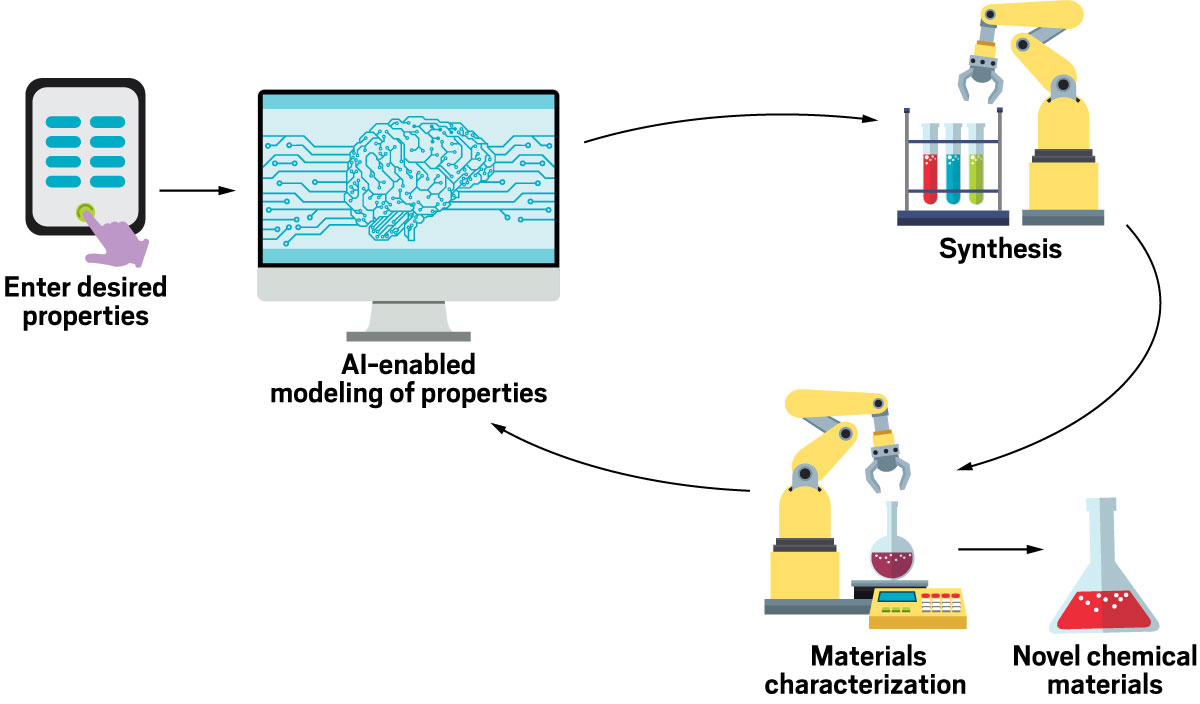
And the timing was right, says Aspuru-Guzik, chief visionary officer of the new firm. Mission Innovation issued a report the following January identifying the concept behind Kebotix as a key approach to meeting a goal of the Paris climate agreement: doubling the rate of research into new materials. Becker, a Harvard-trained chemist, was a perfect fit, according to Aspuru-Guzik, who now teaches at the University of Toronto.
“She’s a very energetic leader with a background as an entrepreneur,” he says, referring to her experience starting an atomic-layer deposition technology firm that she grew into a $20 million-per-year business and sold in 2012. “She matches very well my own personality.”
That includes thinking big. Becker says Kebotix aims to be the foremost materials discovery company of the 21st century. “Our vision is to discover new materials and chemicals more rapidly, to build a better world,” she says, “and to have the most powerful sort of AI brain for all of chemical space.”
The company hopes to get there by replacing the iterative, heuristic approach to science with a hands-off discovery engine that drastically reduces the time and cost—including personnel and overhead—of research. The platform, Becker says, offers a disciplined approach that uses AI to solve problems in materials discovery, working with detailed specifications on qualities such as toxicity, solubility, and activity levels entered by researchers up front.
According to Semion Saikin, chief science officer of the firm, Kebotix incorporates commercially available robotics equipment, the kind commonly used in applications such as high-throughput screening, for synthesis and testing. The firm adapts this equipment with proprietary control algorithms. Processes on the loop share data with an emphasis on prioritizing and simplifying functions via machine learning.
Becker, who has already raised $5 million in a seed round and is poised to launch a series A funding round, says Kebotix will pursue materials discovery on its own and under research contracts with clients, including major chemical companies. “We will own the intellectual property on all the new materials and chemicals we discover,” she says. “We will help our partners to increase the rate of discovery of new chemicals or new uses of chemicals at a reduced cost because we have taken the serendipity out of science.”
Kebotix recently began collaborating with Northeastern University to discover materials for photodynamic cancer therapies with help from a $750,000 grant from the Massachusetts Life Sciences Center. The company has also worked to develop refrigerant lubricants for Orbia Advance, previously known as Mexichem.
Kebotix and its platform are gaining recognition. The firm recently announced that Ashish Kulkarni, chief technology officer at the lab supplies company Avantor, was appointed to its board of directors.
But the proof is in the pudding, Aspuru-Guzik says, “and the pudding is being cooked. The next step is to have materials in the market that were originally discovered by our platform.”

At a glance
Launched: 2013
Headquarters: San Francisco
Focus: Drug delivery for gene editing and RNA-based therapies
Technology: Peptide nanoparticles
Founder: Andre Watson
Funding or notable partners: $15 million in series A funding
In 2013, Andre Watson moved to San Francisco with $1,000, an undergraduate degree, and an ambitious plan to start a new company focused on one of the biotech industry’s most vexing problems: how to get large and complex therapies based on DNA, RNA, and CRISPR gene editing into the body.
Several well-funded CRISPR start-ups were betting on old delivery technologies for the job, but each had distinct drawbacks.
For instance, viruses carry the risk of long-term safety issues. Lipid nanoparticles are safe but generally deliver cargo only to the liver. And electroporation—electrically zapping cells to let CRISPR slip into their loosened membranes—works only on cells removed from the body. Even then, it runs the risk of damaging the cells.
Watson, a newly minted 21-year-old graduate of Rensselaer Polytechnic Institute, thought he had a better solution. At RPI, Watson tinkered with using strings of amino acids called peptides to wrap an older gene-editing system into nanoparticles. Watson thought these peptide nanoparticles could be tailored to home in on specific cells or organs of the body. It took longer for his idea to catch on than he expected.

“There were many months where it was like, ‘Do I eat food, or do I pay rent?’ ” Watson recalls. Investors asked why larger biotech companies hadn’t already tried his approach. “If I came out of Bob Langer’s lab, it would have been a different story,” Watson quips, referring to the well-known Massachusetts Institute of Technology scientist whose lab has spun out dozens of companies, many focused on drug delivery.
But as investors grew more comfortable with gene editing, they began looking for the next generation of delivery technologies. In 2017, Watson’s start-up, Ligandal, finally got $2 million in seed funding to get its experiments rolling. In May this year, it quietly raised $15 million in series A financing from a group of private investors.
Now, Ligandal is setting out to methodically discover the optimal recipes for making peptide nanoparticles tuned to travel to and enter a specific type of cell.
The design of the nanoparticles begins by selecting a target. For instance, is the therapy intended for red blood cells or killer T cells? Once a destination is chosen, Ligandal scientists must determine its cellular zip code. The start-up has developed a computational approach that identifies unique receptors on a cell’s surface and proteins that bind to these receptors. Ligandal synthesizes peptides that mimic the protein-protein interactions and uses them as homing beacons so its nanoparticles target a specific cell type.
Next, these targeting peptides are mixed with several other flavors of peptides designed to hold the nanoparticle together or perform functions like delivering the cargo to the nucleus. Ligandal employs a robot to mix different combinations of peptides and test their ability to deliver their cargo in cells.
“It is tricky, and you can mess it up easily,” Watson says. Changing the order of addition, the concentrations, and the buffer can cause an experiment to go from bad to good, and vice versa, very quickly, he adds.
Surprisingly to Watson, the surge of interest in gene-edited cell therapies is creating a desire for alternatives to electroporation. And that means that Ligandal’s first projects are focused on developing nanoparticles for editing outside the body rather than targeted delivery inside the body, which is still Watson’s ultimate goal. “I had to evolve my pitch over time,” he says.
The start-up recently shipped peptide nanoparticles to its first biotech partner, which will test their ability to deliver messenger RNA into red blood cells. Ligandal is also making nanoparticles that deliver CRISPR and other gene-editing systems to blood stem cells and immune cells.
Testing these approaches in cell therapies is a good proving ground for Ligandal’s nanoparticles, Watson says, but his grand vision is targeted delivery to any cell in the body.

At a glance
Launched: 2014
Headquarters: Alameda, California
Focus: Materials for adsorbing CO₂ and separating other gases
Technology: Amine-appended metal-organic frameworks
Founders: Jeffrey R. Long and Thomas M. McDonald
Funding or notable partners: About $7 million funding in total; partners include NASA, the US Navy, and ExxonMobil
Mosaic Materials CEO and cofounder Thomas M. McDonald is taking aim at arguably the biggest challenge of our time: the global climate emergency resulting from greenhouse gas emissions. His company says it can selectively remove carbon dioxide from the atmosphere using a porous material based on a metal-organic framework (MOF).
McDonald first considered using porous materials to adsorb atmospheric CO₂ when he was an undergraduate at Northwestern University and learned about working with zeolites to sequester compounds from nuclear fuel. “This set me on a path to study MOFs as a PhD,” he says. McDonald did so at the University of California, Berkeley, under the tutelage of Jeffrey R. Long, a professor of chemistry and chemical and biomolecular engineering and the other cofounder of Mosaic.
McDonald arrived at Long’s lab just as funding for the field became available. McDonald’s research during those years is now the foundation for Mosaic’s technology.
The few carbon-capture facilities in operation around the world today generally absorb CO₂ in an amine solvent and later desorb it with heat. McDonald wanted to try combining an amine with a MOF known as Mg₂(dobpdc).

He had expected the amine to anchor the CO₂ to the MOF as a way of effectively storing the gas. Instead, he found that when the amine and MOF are exposed to CO₂, the CO₂ molecules insert themselves into metal-amine bonds in the MOF, inducing a reorganization of the amines into chains of ammonium carbamate. Thanks to this molecular reorganization, the material is able to rapidly adsorb large amounts of CO₂. McDonald describes this unprecedented process as cooperative binding.
With cooperative binding, the MOFs can be switched from adsorption to desorption mode with only a small shift in temperature. That on-off ability means captured CO₂ can be easily released at a relatively low cost in a contained environment. The MOF can then be reused.
McDonald published some of his key findings in 2015 in the journal Nature (DOI: 10.1038/nature14327). In an indication of the complexity of the project, the paper featured 26 authors and took 3 years to complete, he says.
McDonald estimates that capturing carbon in a system based on Mosaic’s material will cost about $40 per metric ton of CO₂ That’s an improvement over the estimated $55–$60 cost for traditional aqueous amine-based systems.
Since starting up in 2014, Mosaic has secured about $7 million in funding from government grants and private partnerships. One of its technology partners is Inventys, a US engineering start-up that aims to use the MOF material in its atmospheric CO₂-capture machine. Mosaic recently agreed to work with ExxonMobil with a view to removing CO₂ from the oil and gas giant’s refineries and chemical plants.
Mosaic is also working with NASA and the US Navy to develop MOFs fine-tuned to remove CO₂ from air in confined spaces.
And likely to have more immediate commercial potential is a project to develop MOFs tuned to separate industrial gases. In particular, Mosaic is working on MOFs that extract ethylene and propylene from industrial gas streams.
Mosaic currently has six staff members, but employment is set to increase markedly in the next few years. “We are hiring,” McDonald says.
The company recently moved its labs from the Molecular Foundry, an incubator space in Berkeley, to nearby Alameda, California. It’s close to making 1 kg of material each week. McDonald’s goal for 2020 is to be able to supply Mosaic’s partners with 100 kg or even 1 metric ton of material.
A challenge for Mosaic is that its material is going to be just one component of a complicated CO₂-capturing device. Scaling up all the components could take 5 years or so, McDonald says, but he is undeterred by the timescale. “As a scientist,” he says, “your goals are really to develop solutions to society’s problems.”

At a glance
Launched: 2011
Headquarters: Montreal
Focus: Plastics recycling
Technology: Solvent purification of polystyrene
Founder: Solenne Brouard Gaillot
Funding or notable partners: $14 million from Anges Québec, Cycle Capital Management, Energy Foundry, Quadriam Investments, Total, and Transition énergétique Québec
Confronted by a public increasingly outraged about plastic waste, industry is clamoring for solutions. Dozens of start-ups have sprouted with recycling technologies that claim to yield high-quality materials that consumer product companies, and consumers, desire.
Among these new firms is Polystyvert, founded in 2011 by Solenne Brouard Gaillot to tackle polystyrene, one of recycling’s tougher challenges. Polystyrene is a notoriously hard-to-recycle material because of its low density—especially in foam form—and its use in contamination-laden applications like food service.
Knowing that polystyrene dissolves in some solvents, Brouard Gaillot tried a Japanese technology based on citrus-derived limonene, but the chemist she hired was unable to replicate the Japanese results. Another chemist directed her to Roland Côté, then a professor at the University of Quebec at Trois-Rivières. Within 3 months, Côté, now Polystyvert’s vice president of R&D, hit upon a new solvent, p-cymene.
The compound p-cymene is the main constituent of the turpentine that results from the sulfite paper-pulping process. It is also found in cumin and thyme essential oils. It has a relatively high flash point, making it safe to handle. It has a high affinity for polystyrene: up to 40% by weight of the material will dissolve in p-cymene. And p-cymene won’t dissolve other common polymers like polyethylene, polyvinyl chloride, and polyethylene terephthalate.
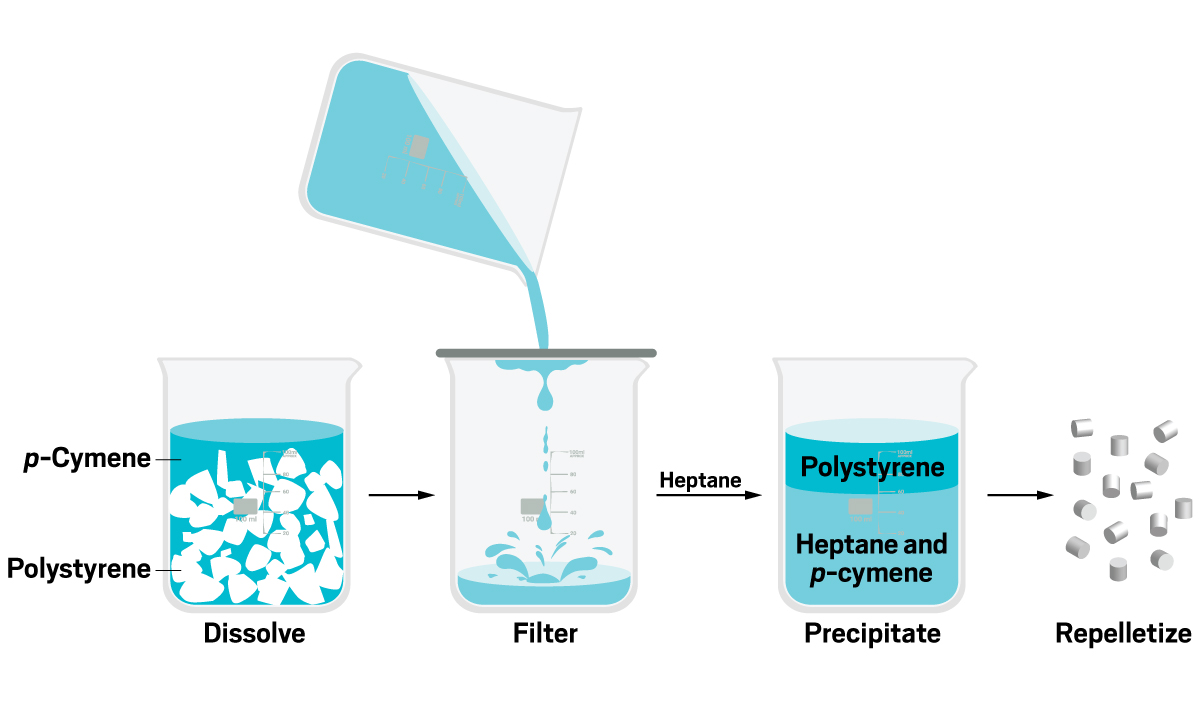
After Polystyvert dissolves polystyrene, it filters the solution to get rid of foreign materials like wood, paper, and other plastics contaminants. A secondary filtration eliminates smaller-particle impurities.
What emerges is a crystal-clear fluid. To that, Polystyvert adds heptane, a dissimilar material that makes the polymer precipitate out of the solution. A distillation step separates the p-cymene and heptane and also takes out dissolved small molecules, usually additives in the original compounded polystyrene, like mineral oils and the flame retardant hexabromocyclododecane.
The process recovers 95% of the polystyrene coming in, at a purity of more than 99.9%, the company says. After being turned into pellets again, the polystyrene can be remolded into new products. “All of this is done at low temperatures, so we are not consuming much energy,” Côté says. The company commissioned a life-cycle analysis that says the process reduces greenhouse gas emissions by 83% versus making virgin materials from fossil fuels. The recycled polystyrene is also 40% cheaper than virgin resin, he says.
Brouard Gaillot sees the low energy consumption as an advantage over other new polystyrene technologies, such as those that depolymerize the material into styrene for repolymerization.
“If you want to implement a circular economy in polystyrene, our technology certainly is very efficient,” Brouard Gaillot says. “However, this does not mean that there is no room for depolymerization technology. The issue with plastics is so huge, there are so many things to do, that not only one solution will fix everything.”
Polystyvert’s technology is generating interest. The company signed a deal with the oil giant and polystyrene maker Total last year. “We are very proud to have such a famous partner,” Brouard Gaillot says. It has also been working with the styrenic polymer maker Ineos Styrolution.
The company raised $8 million from investors in a 2018 funding round. It has brought in nearly $14 million to date, and Brouard Gaillot says it plans to raise another $3 million next year.
Polystyvert has been operating a pilot plant with 125 kg/h of capacity since last June. The firm plans to license its technology for 1,000 kg/h facilities that will be deployed at customer sites.
Brouard Gaillot aims to begin installations later this year. Interested customers include insulation makers that would dissolve polystyrene foam waste from sources such as demolition sites.
Polystyvert has filed for approval with the US Food and Drug Administration for food-contact applications. Brouard Gaillot is confident the firm will win approval because of the unique high-purity product obtained from the p-cymene recycling process.
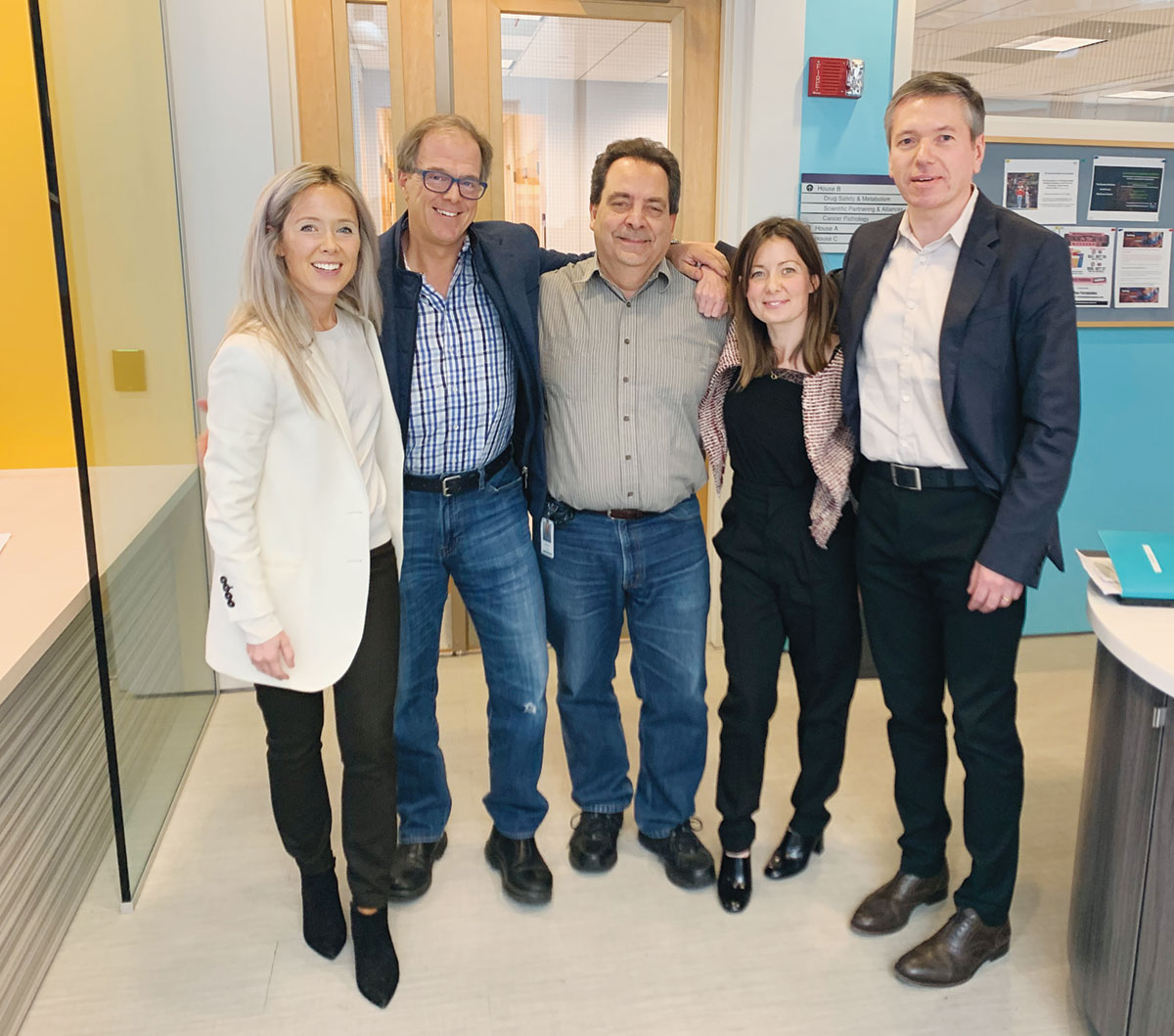
At a glance
Launched: 2016
Headquarters: Waltham, Massachusetts
Focus: Drug discovery for cancer, genetic diseases, and neurological diseases
Technology: Small molecules that alter RNA splicing
Founders: Bill Haney and Kathleen McCarthy
Funding or notable partners: $48 million from private investors, $74 million from Biogen, and $60 million from Celgene; partnerships with Genentech, Merck & Co., and Takeda Pharmaceutical
Spinal muscular atrophy (SMA), a neurodegenerative disease that robs infants of their muscle control, is becoming less fatal. Two therapies—a gene therapy and an antisense oligonucleotide—are already approved to treat it.
A third potential therapy, based on a small molecule, is in the final stages of clinical testing at Roche. Like the antisense therapy, it works by altering RNA splicing—something most people didn’t think a small molecule could do until a few years ago.
RNA splicing is the intricate process that cells use to remove unwanted regions of their RNA code and stitch the desired regions, called exons, back together. Drug developers already use bulky antisense oligonucleotides to force cells to either include or skip over certain exons. By altering RNA splicing, those drugs create detours around genetic mutations and turn faulty RNA molecules into ones that produce functional proteins.
Kathleen McCarthy was part of the team—first at the Spinal Muscular Atrophy Foundation and later at Roche—that developed a small molecule to alter the splicing of a particular RNA. In mice, the molecule restored the production of a protein normally missing in SMA.

It was an unprecedented achievement for a small molecule, and it got McCarthy thinking: “How can we take what we learned from SMA and apply it to other diseases?”
So in 2016, McCarthy called up her old friend Bill Haney—a documentary filmmaker, entrepreneur, and CEO of the start-up Dragonfly Therapeutics—to hash out her hypothesis. Haney was intrigued but didn’t want to court investors to raise money for a new company. “I’ll write a check,” he recalls telling McCarthy.
Although neither Haney nor McCarthy have advanced scientific degrees, the preliminary data produced by their start-up, Skyhawk Therapeutics, quickly garnered the attention of larger drug developers. Since its inception 3 years ago, Skyhawk has signed partnerships with Biogen, Celgene, Genentech, Merck & Co., and Takeda Pharmaceutical to develop splicing-altering drugs. “It took off really quickly and quite unexpectedly,” McCarthy says.
Today, Skyhawk is developing small molecules with at least three distinct ways to alter splicing. The first strategy, and the one applied in Roche’s SMA program, is exon inclusion. Here, a small molecule forces the RNA-splicing machine, called the spliceosome, to grab an otherwise excluded exon and put it in the final RNA product.
In exon skipping, a small molecule causes a cell to leave out a problematic exon, with the goal of producing a slightly shorter, but still functional, protein. Other companies have used antisense oligonucleotides to skip over exons that cause Duchenne muscular dystrophy, with the goal of creating a less severe disease.
The third strategy—and one that McCarthy is particularly excited about—is called exon interference. Her team is working to design small molecules that intentionally disrupt exon splicing to prevent cells from producing bad proteins.
The goal is to target historically undruggable proteins, like KRAS, implicated in cancer and stop the toxic buildup of proteins linked to neurological diseases like Alzheimer’s and Parkinson’s. Skyhawk is also exploring exon interference for applications in inflammatory and infectious diseases.
A major challenge for all approaches will be finding molecules that selectively alter the splicing of a particular RNA while leaving other RNA molecules alone. And that’s no small feat. Historically, scientists considered RNA undruggable—and certainly not selectively so—due to its seemingly generic and floppy structure. “RNA gets a bad rap,” McCarthy says. “There are actually very specific structures in RNA that we can target.”
It will be several years before Skyhawk is able to prove its worth. Haney anticipates that the first clinical trials will begin in 2021. Until then, don’t expect to hear much about the company’s science—it is shying away from presenting at conferences.
“I am trying like crazy to shorten that period of time from cool idea to patients being helped,” Haney says. “And I don’t want to do anything that’s a distraction.”

At a glance
Launched: 2016
Headquarters: Chicago
Focus: Meat replacement
Technology: Aerobic fungi grown in bioreactors
Founders: Thomas Jonas and Mark Kozubal
Funding or notable partners: $33 million from 1955 Capital, Breakthrough Energy Ventures, ADM Ventures, and Danone Manifesto Ventures
Millions of people visit Yellowstone National Park each year to see snow-capped mountains, grizzly bears, and geologic oddities like geysers and rainbow-hued volcanic hot springs.
It’s doubtful that tourists peering into hot springs filled with highly acidic water and streaky, burbling goo would think that anything in there is edible. But that’s exactly what the founders of Sustainable Bioproducts have in mind for one special organism that thrives there.
The organism, a filamentous fungus, may soon have a starring role on the plates of consumers who like meat but want to avoid animal agriculture’s environmental impact.
Thomas Jonas, CEO and cofounder of Sustainable Bioproducts, says the company hasn’t yet given its favorite fungus a name; for now it’s just called MK7. It’s the seventh organism that Mark Kozubal, a chemist and geomicrobiologist, discovered in the volcanic springs. He found it while working on a NASA-funded mission to figure out what conditions might support life on other planets.

Soon after Jonas and Kozubal met in 2015, they decided to start a company, with Kozubal as chief science officer, to find an earth-based role for MK7. After a few false starts they realized the answer was food.
“It’s a formidable organism and has some remarkable qualities,” Jonas says.
Unlike single-cell microbes, MK7 does not have to reproduce to grow. Instead, it puts on weight by growing its filaments into a mass called a mycelium. And like other filamentous fungi, MK7 grows rapidly when it has plenty to eat.
With a bit of coaxing, the filaments of MK7’s mycelium interlace to form a matted structure similar to muscle fiber. And while “mycelium mat” may not sound nutritious, the stuff is 50% protein and, like animal protein, contains all nine essential amino acids.
It also contains heme, an iron-transporting protein that adds a meaty flavor. The plant-based burger company Impossible Foods has been garnering headlines for the soy version of heme, which the firm makes from engineered yeast.
“Our organism does all of this natively,” Jonas says. “And it contains vitamin D, calcium, fiber—a lot of things that are very attractive nutritionally.”
An extremophile, MK7 happily lives in a battery acid–like environment with a pH of around 2.5, a condition that kills other organisms that could contaminate or compete with it.
Still, the going was not all smooth for industrial production of MK7. Unlike yeast, the workhorse of fermentation, MK7 is aerobic. Bubbling sufficient oxygen through a giant fermentation vessel requires a lot of energy. Growing it sustainably called for a new kind of bioreactor.
Jonas’s team developed a system of stacked trays to hold liquid nutrients; each tray has room for air at the top. Resting on top of the liquid, MK7 grows into a mycelium mat in a day or two.
The company is building a 3,300 m2 pilot factory in Chicago’s meat-packing district for a yet-to-be-revealed product. The start-up’s goal is to attract consumers who want to swap out their go-to proteins for something more sustainable than meat or even meat substitutes made with plant protein. For example, production of pea or soy protein ingredients requires large amounts of land and water along with fertilizers and pesticides.
“Other products are not adding protein to the world’s supply; they just turn it from one form to another,” Jonas points out. “We are creating protein—as if suddenly there’s a new cow.”
But what about the taste? That’s the easy part, according to Jonas. Flavor-wise, the mycelium provides a blank slate, much as chicken does. Chefs and home cooks already know how to turn a bland, uncooked piece of meat into a gustatory treat. “As we say in French,” Jonas says, “it’s all about the art of cuisine.”

At a glance
Launched: 2017
Headquarters: Houston
Focus: Low-energy production of hydrogen
Technology: Plasmonic photocatalysis
Founders: Trevor Best, Naomi Halas, Suman Khatiwada, and Peter Nordlander
Funding or notable partners: $5.8 million in series A funding from investors including Creative Destruction Lab, the Engine, Evok Innovations, and the Goose Society of Texas
Almost all hydrogen is produced by steam-methane reforming, a decidedly old-school process in which methane and water are combined over a catalyst at temperatures of well over 800 °C. Syzygy Plasmonics has a new approach: do the reaction with a photocatalyst at temperatures closer to what’s in a kitchen oven.
Trevor Best and Suman Khatiwada came up with the idea for Syzygy in 2017, when they were colleagues in the R&D department of Baker Hughes who liked their jobs but wanted to do more than devise new materials for getting oil out of the ground.
At night and on weekends they pored over academic journals, looking for a technology to commercialize. They came across an intriguing 2016 paper by a team led by Naomi Halas and Peter Nordlander, professors at Rice University, where Khatiwada got his PhD in materials science.
The Rice scientists are pioneers in plasmonics, the study of how light waves and metallic nanoparticles interact. Their paper described plasmonic aluminum particles decorated with bits of palladium catalyst. When the researchers shined a light on the nanoparticles, electrons from the aluminum—known as hot carriers—worked with the catalyst to activate a chemical conversion at a much lower temperature than is needed for traditional catalysis (Proc. Natl. Acad. Sci. U.S.A. 2016, DOI: 10.1073/pnas.1609769113).

In their experiment, Halas and Nordlander converted acetylene into ethylene. The budding entrepreneurs figured they could create photocatalysts for multiple reactions by combining plasmonic metals with different transition-metal and oxide catalysts.
They got a meeting with the scientists to discuss their idea, Best recalls, and then went off to try to find holes in the technology. “After 8 months, we realized we can’t break it; we couldn’t find a reason why it won’t work,” he says.
Best and Khatiwada quit their jobs, licensed the technology from Rice, and formed Syzygy. One of their first hires was Shreya Shah, a PhD chemical engineer whom Khatiwada met in November 2017 at a career workshop sponsored by the American Chemical Society’s Greater Houston Section. ACS publishes C&EN.
Chemists have long known about photocatalysts, but industrial applications are rare because of their poor efficiency. By using the right (undisclosed) materials and assembling them in the right (also undisclosed) way, Syzygy has created a catalyst that, according to Best, is 100 times as active as today’s best platinum–titanium dioxide photocatalyst.
Syzygy couples its photocatalysts with high-power, high-efficiency light-emitting diodes to drive the reactions. “Five to 10 years ago, those lights didn’t exist,” Best says. “These two things together suddenly make it all worthwhile.”
In March 2018, Best and Khatiwada raised $900,000 in seed funding that helped pay for a tiny lab-scale photocatalytic reactor. By the end of 2018, they had built a coffee-cup-sized device that Best calls the world’s first high-throughput photocatalytic cell.
Three months ago, Syzygy announced $5.8 million in series A funding, which it will use to improve the cells and link them together to test larger-scale hydrogen production. Although Syzygy has its own labs in Houston, it plans to scale up at the J.J. Pickle Research Campus at the University of Texas at Austin, which is better equipped to handle a hydrogen-generating reaction.
Best anticipates building small-scale generating stations to produce hydrogen from methane for fuel-cell cars and for companies such as Amazon and Walmart that have committed to using hydrogen power. Syzygy is also exploring other ways of making hydrogen, including by decomposing ammonia made with renewable energy. Longer term, Best says, photocatalysis can improve the production of other basic chemicals such as ethylene, methanol, and ammonia.
“We see the potential for this technology to be broadly applicable to any gas-phase reaction,” he says.
Of course, Syzygy isn’t there yet. “We are showing dramatic results,” Best says, “but there’s still a lot of work to be done before we have a product.

At a glance
Launched: 2017
Headquarters: Somerville, Massachusetts
Focus: Chemical separations
Technology: Graphene oxide membranes
Founders: Shreya Dave, Jeffrey Grossman, and Brent Keller
Funding or notable partners: $10.5 million from government grants and investors, including the Engine by MIT, Safar Partners, and ARPA-E
Shreya Dave didn’t set out to disrupt the chemical separations industry. As a PhD student at the Massachusetts Institute of Technology, Dave was trying to create a better membrane for water purification, which would increase access to clean water while reducing the costs and energy associated with it. Her membrane was good enough to separate sodium chloride from seawater.
But Dave also spent a portion of her PhD research analyzing the economics of the new technology, and what she found was disheartening: the new technology wasn’t going to affect consumers’ water costs at all. She defended her PhD with the expectation that her work was “never going to be commercialized,” she says.
Instead, a week later, she stumbled on an article about industrial chemical separations and had a realization. Nearly half of all US industrial energy is used for thermal separation and purification—for things like pharmaceuticals and food and beverages—amounting to about 12% of total US energy use. Converting these energy-intensive separations to filtration could cut 90% of that energy, saving a collective $20 billion annually and reducing greenhouse gas emissions along the way, according to Dave’s analyses. Dave realized that the membrane she developed could fill this niche.
Membranes on the market today are generally based on ceramics or polymers. Ceramic membranes cannot achieve small enough pore sizes for many chemical separations, and polymer membranes cannot withstand the harsh solvents used in many industrial settings. Dave’s solution was to come at the problem with a new material.

Her membrane is made of sheets of graphene oxide—graphene with various oxygen-containing functional groups attached. Graphene oxide is cheaper than pure graphene but has many of the same properties.
Crucially, unlike ceramic or polymer membranes, the material can withstand harsh industrial conditions, such as chlorinated solvents and oxidizers. Layers of the material are stacked and attached with Via Separations’ proprietary link, which allows the company to tune the spacing to the exact needs of the customer. The membranes can achieve pore sizes smaller than 1 nm.
In 2017, Dave and two cofounders spun Via Separations off from MIT.
By then, the fledgling company had raised enough money for Dave to come on full-time. Today, Via has eight full-time employees and typically takes on four co-op students each semester.
The team is focusing on two industries: food and beverage and papermaking. The team identified them as the two areas where the membrane technology could make the biggest immediate impact on energy costs.
Since leaving the lab at MIT, Dave says, Via has scaled up the dimensions of its product 6,000 times over. But, she says, it still has “a couple of orders of magnitude to go.” The team plans to implement pilot projects over the next year and expects to be delivering products to customers by 2021.
Dave credits the company’s early success to the complementary skills of the three cofounders: herself, fellow MIT alum Brent Keller, and their PhD adviser, MIT materials scientist Jeffrey Grossman. Keller, Via’s chief technical officer, comes from a chemical engineering background, which equips him to tackle the problems of scale-up. Chief Scientist Grossman, Dave says, is a “scientific visionary” and excels at people management. Meanwhile, Dave’s mechanical engineering background gives her the manufacturing and product development know-how to lead the team as Via’s CEO.
Via has raised $10.5 million to date, about half from venture capital partners and half from government research and innovation grants.
Energy efficiency is not the most glamorous problem to tackle, Dave admits. However, it’s an area where the company is poised to have an immediate effect, both for customers and the planet. “We are not 10 years out from generating a solution,” she says. “We are 2 years out.”











 CycloPure
CycloPure Frontier Medicines
Frontier Medicines Kebotix
Kebotix Ligandal
Ligandal Mosaic Materials
Mosaic Materials Polystyvert
Polystyvert Skyhawk Therapeutics
Skyhawk Therapeutics Sustainable Bioproducts
Sustainable Bioproducts Syzygy Plasmonics
Syzygy Plasmonics Via-Separations
Via-Separations


Join the conversation
Contact the reporter
Submit a Letter to the Editor for publication
Engage with us on Twitter